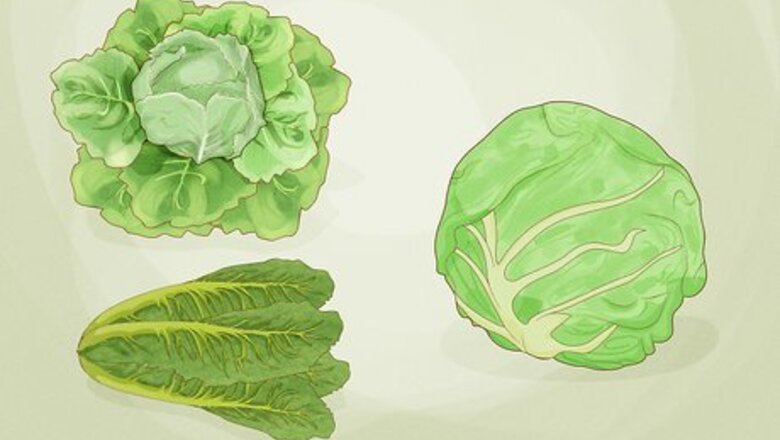
views
Growing Head Lettuce

Choose a head lettuce variety for indoor planting. Head lettuces take longer to mature. If you start the seeds inside, the plants can benefit from an earlier planting date, and therefore a longer growing season. Iceberg and romaine are two common types of head lettuce. If you're planting loose leaf lettuces, skip down to these instructions. If you are planting in late spring or summer, you may need a heat-resistant variety such as Jericho. This is especially important if you live in a hot climate.
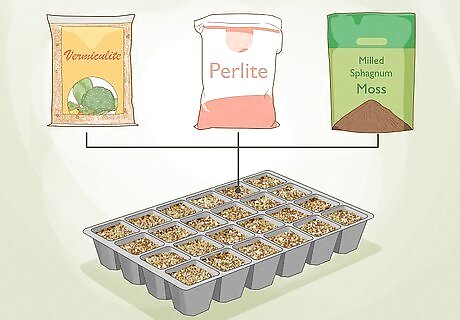
Prepare seed trays. You can start your lettuce seeds in store-bought seed trays or make your own out of an old egg carton, box or newspaper. Fill the seed trays to within ⁄2 inch (1.3 cm) of the top with a soilless growing medium. Moisten the medium in preparation for sowing the seeds. Seeds already contain the nutrients they need to germinate, so you can plant them in a soilless growing medium. You can buy a growing medium or make on from an equal mix of vermiculite, perlite, and milled sphagnum moss. Since the seeds will be moved to the ground once they sprout, the aesthetics of your seed trays aren't as important as their functionality.

Sow the seeds 4-6 weeks before the last spring frost. This will give them time to germinate and sprout before the ground gets soft enough to plant them outside. Scatter seeds evenly into the compartments in the seed tray. Use your fingers to gently press them into the growing medium.
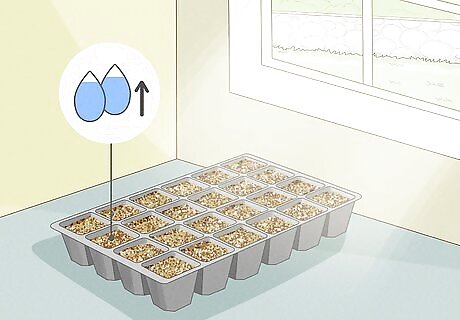
Give the seeds plenty of sunlight and water. Place the tray in a sunny window and keep the growing medium moist at all times. If you let it dry out, the seeds may not be able to grow. You can cover the seed trays with a few layers of newspaper for the first week or so, until the seeds sprout. Keep the newspaper moist with water at all times, and remove the newspaper when you see green shoots coming up. Don't overwater the seeds. If they get waterlogged they may not be able to grow.
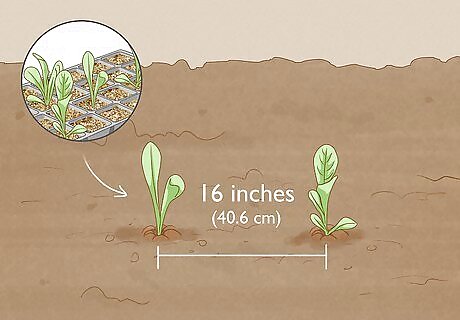
Transplant into the garden. The earliest you can transplant your seedlings is two weeks before the last spring frost date. Dig holes in rows 16 inches (40.6 cm) apart, just deep enough to plant the root balls underground. Lift the lettuce seedlings from the seed tray and place them into the holes. Gently pat soil around the roots so that the seedlings stay upright, planted to the same depth they were in the trays. Water the seedlings thoroughly. For best results, "harden off" the seedlings first by placing the tray in a sheltered outdoor area part of the time. Do this for two or three days, increasing the amount of outdoor time each day. You can continue to grow indoor seedlings and transplant them outside throughout the growing season. Select heat-resistant varieties for summer transplanting. Use a watering can or a hose with a diffuser spray nozzle to water the lettuce garden. Don't completely drown the seedlings in water; just make sure the soil is damp.
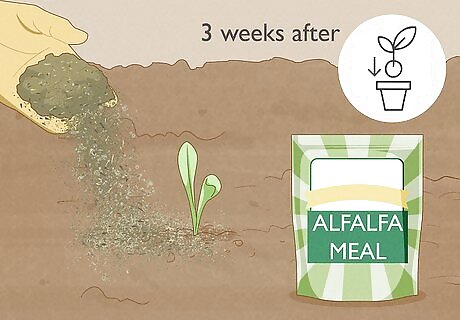
Fertilize the lettuce three weeks after transplanting. Use alfalfa meal or slow release fertilizer that is rich in nitrogen. This will keep the lettuce growing fast and strong.
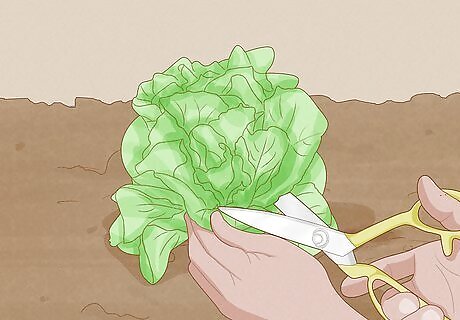
Cut mature leaves. When the leaves look mature enough to eat, resembling lettuce leaves you'd buy in the grocery store, cut them with a harvest knife or scissors. After a few weeks, when the plant is mature, you'll want to cut the whole plant from the ground. If you leave it in, the lettuce will eventually go bad. Harvest leaves in the morning. They acquire a crispness overnight, and they'll retain it if you harvest early. See How to Harvest Romaine Lettuce for harvesting this type of lettuce. Lettuce starts to "bolt" in hot conditions toward the end of the growing season. It begins producing seeds and acquires a bitter taste. You can keep this from happening by pinching off the center of the plant. If a lettuce plant does end up bolting, go ahead and pull it up.
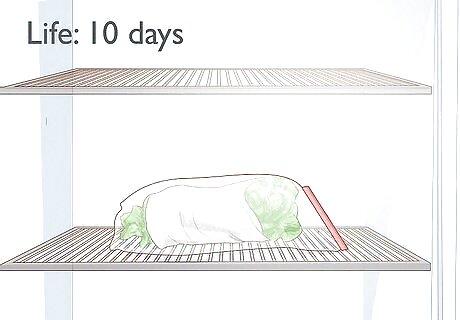
Store harvested lettuce in the refrigerator. If you don't eat your lettuce right away, you can store it. If you put it in a plastic bag with some paper towels, it should keep for up to ten days.
Growing Loose-Leaf Lettuce
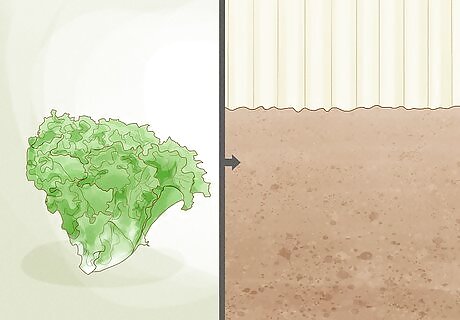
Choose a loose leaf variety for outdoor planting. Loose leaf cultivars are the brightly colored, nutritious lettuces often sold in a "spring mix." These lettuces tolerate warmer temperatures and a shorter growing season than other varieties, so they are usually scattered directly in the garden. Head lettuce should generally be planted indoors instead. Hot weather triggers "bolting" in lettuce, halting leaf growth and introducing a bitter flavor. In hot climates, such as the southern U.S., you'll need to plant the lettuce as soon as possible, or look for a heat-resistant variety.
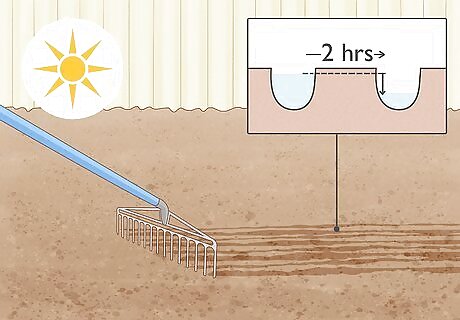
Prepare the planting bed. You should plan to plant the lettuce as soon as the ground is workable. Choose an area with soil that drains well and gets plenty of sun. Use a soil tiller or a spade to break up the soil and remove rocks, sticks and roots from the area. Lettuce is hardy, but there are certain conditions that won't allow it to grow properly. Make sure the soil isn't too soggy, and that it has plenty of nitrogen. Make sure the soil is humus rich as well. Talk to someone at your local nursery to discuss ways to enrich the soil in your particular region to make it excellent for growing lettuce.
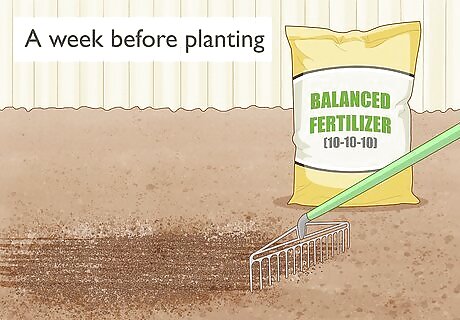
Fertilize the bed. Mix in compost or a balanced fertilizer into the bed at least one week before planting. Optionally, you can apply a nitrogen-heavy fertilizer alongside the plants after about three weeks, when leaves are four inches (10 cm) wide.
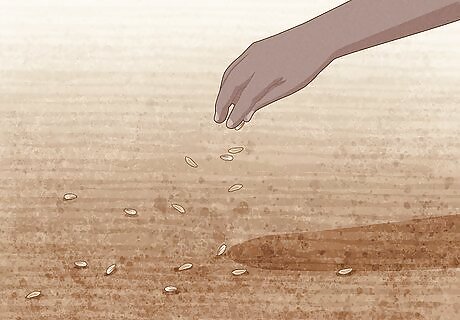
Broadcast the seeds. Lettuce is cold-hardy, so you can usually plant them directly in soil about two weeks before the last expected spring frost, or up to six weeks in advance if protected by cold frames or tunnels. Broadcast the seeds over tilled soil, then scatter about ⁄2 inch (1.3 cm) of soil on top of them. One seed packet will cover about 100 feet (30.5 m). Water the seed bed thoroughly after planting. Stagger the planting at one or two week intervals to get harvests throughout the season. Keep in mind that most lettuces do not grow well in hot temperature, so the last planting date depends on your local climate and the needs of your lettuce cultivar. For best results, use heat-resistant varieties or plant in shade for the final sowings.
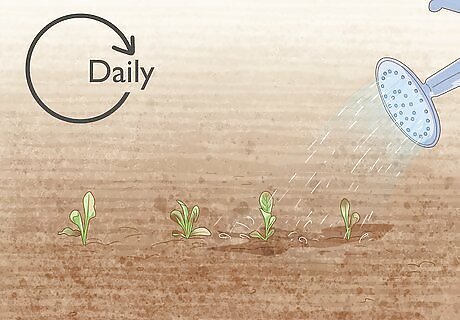
Keep the lettuce watered. If the leaves look wilted, they need to be watered. Give the lettuce a light sprinkling every day, and any time the leaves look a little limp.
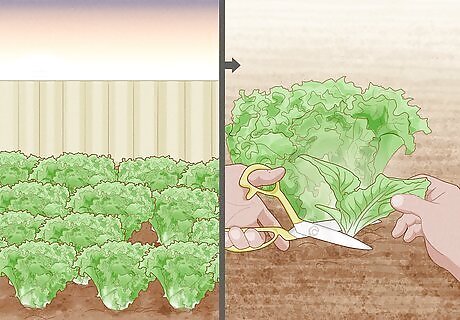
Cut away mature leaves. When harvesting looseleaf lettuces, use scissors or a knife to remove the mature leaves without harming the rest of the plant. You can start doing this as soon as the leaves reach the size you'd see in a grocery store. Remove the whole plant after a few weeks, or the plant will turn bitter and start to seed. Harvest in the early morning for the crispest leaves. Pinching off the center of the plant will extend the harvest period. Store lettuce leaves in the fridge for up to ten days, keeping them in a plastic bag with a couple paper towels.


















Comments
0 comment